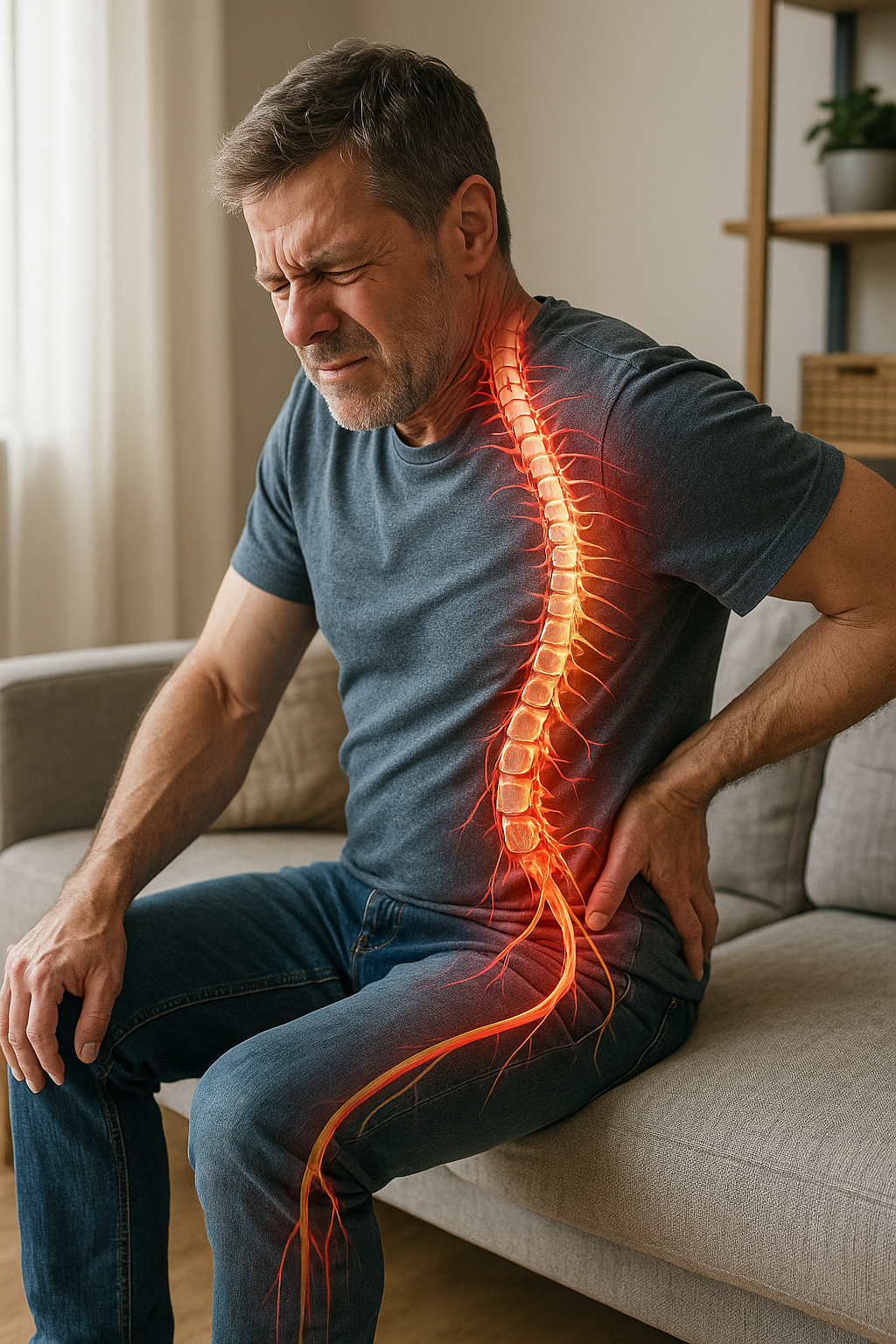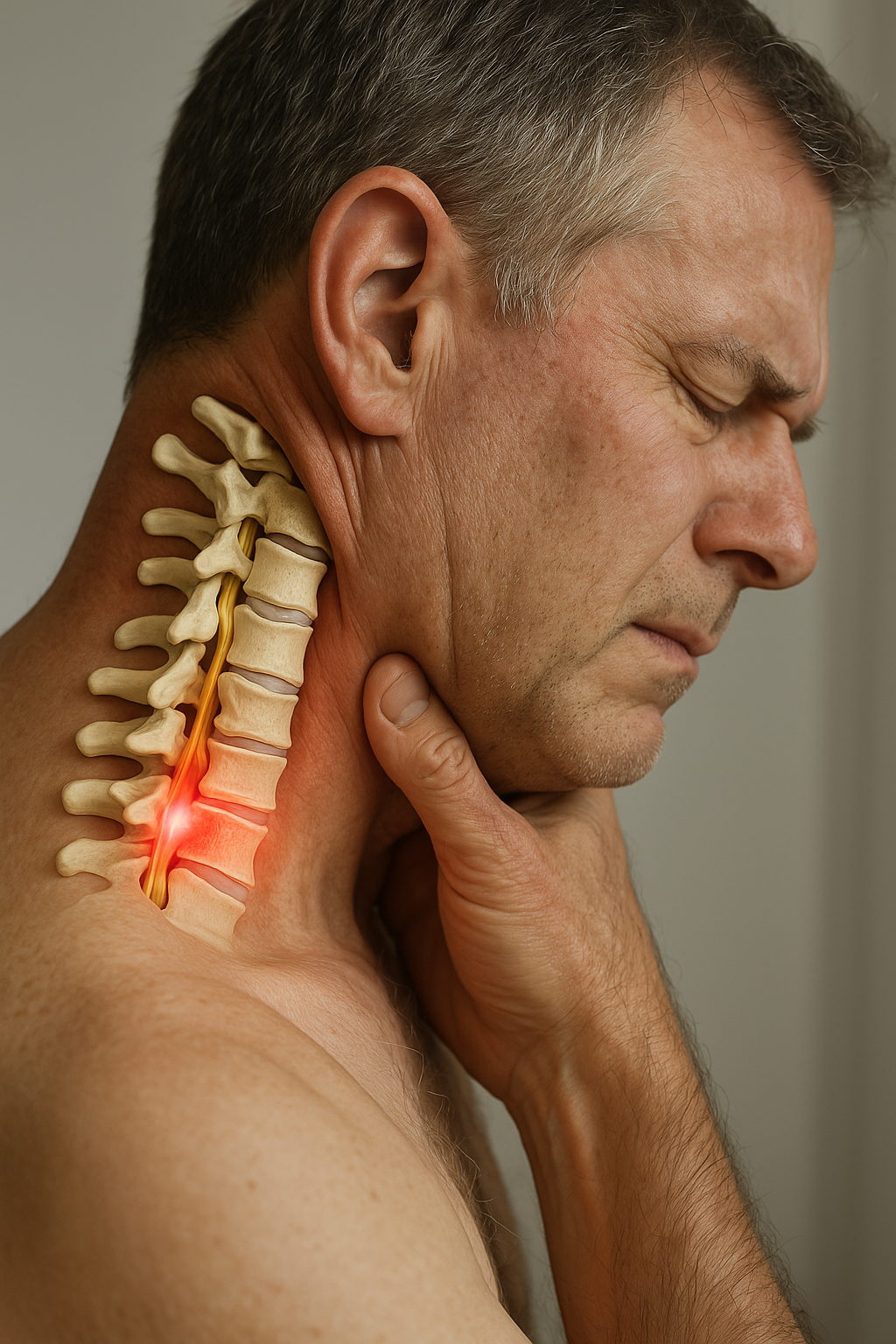Living with lumbar spinal stenosis can be a daily challenge, as this condition often affects the lower back by narrowing the spinal canal. This narrowing can lead to significant discomfort and disrupt everyday activities. Understanding lumbar spinal stenosis is crucial in managing its impact on your life and finding effective relief. This condition is most commonly seen in older adults, but it can affect anyone, causing symptoms that range from mild to severe.
Understanding lumbar spinal stenosis
Lumbar spinal stenosis is characterized by the constriction of spaces within the spine, which can exert pressure on the nerves traveling through the lower back into the legs. This pressure can result in a variety of symptoms that significantly impact daily living. Individuals with this condition often experience persistent low back pain, which tends to worsen with physical activity and improve with rest. In addition to back pain, many people report discomfort in the legs, feet, and buttocks, sometimes accompanied by numbness or weakness.
Early diagnosis and treatment are vital in preventing the progression of lumbar spinal stenosis. By addressing the condition promptly, individuals can enhance their quality of life and reduce the risk of more severe symptoms. Ignoring the early signs can lead to increased pain and a greater likelihood of requiring more invasive treatments down the line.
Key symptoms to watch for
Recognizing the symptoms of lumbar spinal stenosis is the first step toward effective management. Common symptoms include:
- Low back pain: This is often exacerbated by physical activity and relieved by rest.
- Pain, numbness, or weakness in the legs, feet, and buttocks: These sensations are typically due to nerve compression.
- Stiffness in the legs and thighs: This can make movement and flexibility challenging.
- Neurogenic claudication: Leg pain or cramping that intensifies with walking or standing and improves with sitting or leaning forward.
- Severe cases: Incontinence, saddle anesthesia (numbness in the genital area and inner thighs), and motor weakness may occur, indicating a need for urgent medical attention.
The progression of these symptoms can vary from person to person, but they generally worsen over time if left untreated. This underscores the importance of seeking medical advice if you experience any of these symptoms, particularly if they begin to interfere with your daily activities or quality of life. Early intervention can lead to better outcomes and help prevent the condition from worsening.
Exploring the causes and pathophysiology of lumbar spinal stenosis
Understanding the underlying causes of lumbar spinal stenosis is essential for effective management and treatment. The condition primarily arises from degenerative changes associated with aging. As we age, the spine undergoes natural wear and tear, which can lead to the development of arthritis. This degenerative process may result in the thickening of ligaments, bone spurs, and disc herniation, all of which contribute to the narrowing of the spinal canal.
When the spinal canal narrows, it exerts pressure on the spinal cord and the nerves branching out from it. This pressure is responsible for the array of symptoms experienced by individuals with lumbar spinal stenosis. The compression of nerves can lead to pain, numbness, and weakness, particularly in the lower extremities. Understanding these mechanisms highlights the importance of addressing the root causes to alleviate symptoms and improve quality of life.
Treatment options: a stepwise approach to managing lumbar spinal stenosis
Treating lumbar spinal stenosis involves a comprehensive approach that considers the severity of symptoms and the underlying causes. The treatment plan often begins with conservative management strategies aimed at relieving pain and improving function.
Conservative management
Physical therapy plays a crucial role in conservative management. Tailored exercises designed to strengthen the back and improve flexibility can significantly reduce symptoms. These exercises are often complemented by education on proper body mechanics to prevent further strain on the spine.

Lumbar support belt
Provides adjustable support and relief for lower back pain and lumbar conditions.
Medications, including nonsteroidal anti-inflammatory drugs (NSAIDs) and pain relievers, are commonly prescribed to manage discomfort. These medications help reduce inflammation and alleviate pain, allowing individuals to engage more fully in physical therapy and daily activities.
Lifestyle modifications are also essential. Rest and activity modification can help manage symptoms, while maintaining a healthy weight and staying active can prevent further progression of the condition.
Interventional treatments
For individuals who do not respond to conservative measures, interventional treatments may be considered. Epidural steroid injections (ESIs) can provide temporary relief by reducing inflammation around the affected nerves. Additionally, radiofrequency thermal ablation (RFA) and needle procedures targeting thickened ligaments offer alternative options for symptom management.
Surgical options
In cases where conservative and interventional treatments fail to provide adequate relief, surgical intervention may be necessary. Decompressive laminectomy, with or without fusion, is a common surgical procedure for severe lumbar spinal stenosis. This surgery involves removing part of the vertebrae to relieve pressure on the spinal cord and nerves.
Minimally invasive decompression techniques, such as endoscopic decompression, are also available. These innovative procedures offer the advantage of reduced recovery time and less postoperative pain compared to traditional surgery. Additionally, interspinous spacers, like the X-STOP device, can be inserted to maintain space between vertebrae, providing relief without extensive surgery.
Patient guidance and prognosis
Early diagnosis and management of lumbar spinal stenosis are crucial to preventing severe complications and enhancing quality of life. Patients are encouraged to seek specialized evaluation if symptoms worsen or become severe, as timely intervention can lead to significant improvement.

Men's Posture Shirt™ - Black
Improves posture and relieves neck, shoulder, and back pain with patented technology.
With appropriate treatment, many individuals experience a reduction in symptoms and an improvement in their ability to perform daily activities. By following a comprehensive treatment plan and making necessary lifestyle adjustments, patients can achieve a better quality of life and reduce the risk of long-term disability associated with lumbar spinal stenosis.
Innovative and minimally invasive techniques for lumbar spinal stenosis
As medical technology advances, patients with lumbar spinal stenosis have more options than ever before. Innovative and minimally invasive techniques are increasingly popular for those seeking alternatives to traditional surgery. These methods not only aim to relieve symptoms effectively but also offer the benefits of reduced recovery time and fewer complications.
Minimally invasive procedures, such as endoscopic decompression, allow surgeons to access and treat the affected area with smaller incisions. This approach reduces tissue damage and leads to quicker recovery, enabling patients to return to their daily activities sooner. Another emerging technique involves the use of interspinous spacers, like the X-STOP device, which are designed to maintain space between the vertebrae, alleviating pressure on the spinal nerves without extensive surgery.
Radiofrequency thermal ablation (RFA) is another innovative treatment that targets thickened ligaments contributing to spinal canal narrowing. By using heat to shrink the affected tissue, RFA can provide significant symptom relief with minimal invasiveness. These advancements in treatment options underscore the importance of consulting with a healthcare provider to determine the best approach based on individual needs and the severity of the condition.
Frequently Asked Questions
What is the primary cause of lumbar spinal stenosis?
Lumbar spinal stenosis is primarily caused by degenerative changes due to aging, including arthritis and thickening of ligaments, which lead to the narrowing of the spinal canal.
What are the first symptoms of lumbar spinal stenosis?
Initial symptoms often include low back pain, leg pain, numbness, or weakness, particularly during activity. These symptoms may improve with rest.
How is lumbar spinal stenosis diagnosed?
Diagnosis typically involves a physical examination and imaging tests like MRI or CT scans to assess the extent of spinal canal narrowing and confirm the presence of stenosis.
What non-surgical treatments are available?
Non-surgical treatments include physical therapy, medications such as NSAIDs and pain relievers, lifestyle changes, and interventional procedures like steroid injections to manage symptoms.
When is surgery considered for lumbar spinal stenosis?
Surgery is considered when conservative treatments fail to relieve symptoms, or if there is significant nerve compression causing severe symptoms or neurological deficits.
Can lifestyle changes help manage symptoms?
Yes, maintaining a healthy weight, staying active, and modifying activities can help manage symptoms and improve quality of life for individuals with lumbar spinal stenosis.
Are there any risks associated with surgical treatments?
As with any surgery, there are risks, including infection, bleeding, and nerve damage, but these are generally low with modern surgical techniques. Discussing potential risks with a healthcare provider is essential before proceeding with surgery.
Kilder
- RWJBarnabas Health. ”Lumbar Spinal Stenosis.”
- American Association of Neurological Surgeons. ”Lumbar Spinal Stenosis.”
- American Academy of Orthopaedic Surgeons. ”Lumbar Spinal Stenosis.”
- Hospital for Special Surgery. ”Lumbar Spinal Stenosis: Conditions and Treatments.”
- University of Utah Health. ”Lumbar Spinal Stenosis.”
- Loyola Medicine. ”Understanding Spinal Stenosis: Symptoms, Causes, and Treatment Options.”
- Cleveland Clinic. ”Spinal Stenosis.”
- Mayo Clinic. ”Spinal Stenosis: Symptoms and Causes.”
- UVA Health. ”Lumbar Stenosis.”


















